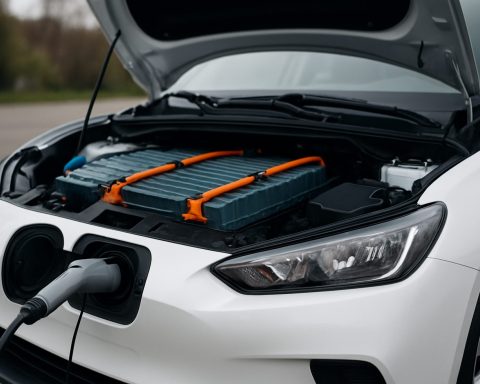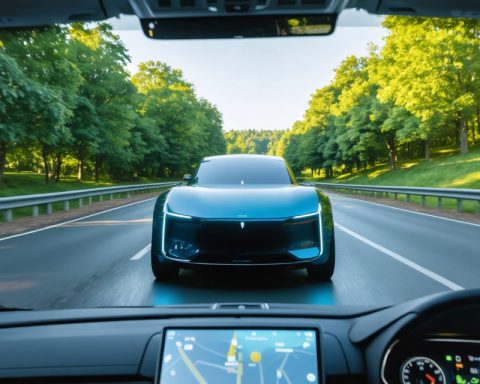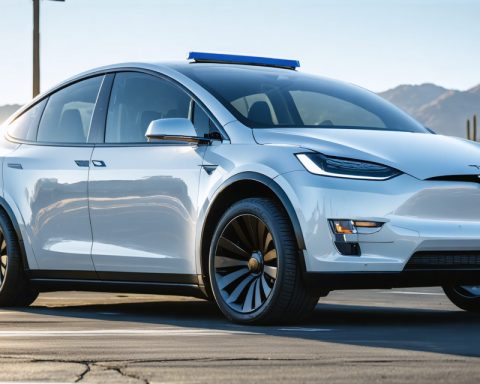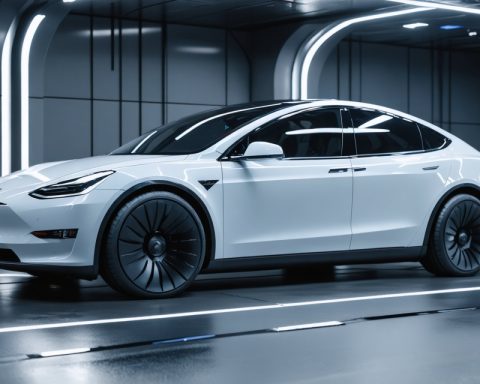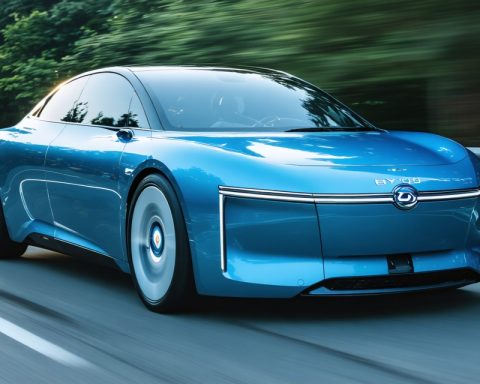- Wayve, a UK-based company, is revolutionizing autonomous driving by focusing on AI and minimizing the use of excessive sensor technology.
- In 2024, backed by $1.05 billion from investors like Uber, Wayve plans to integrate its technology across various manufacturers rather than deploying its own fleet.
- The company uses a neural network, GAIA-1, to create photorealistic 3D landscapes from driving data, aiming for Level 4 autonomy.
- Wayve has established a vital hub in Baden-Württemberg, Germany, to leverage the nation’s automotive expertise and advance its AI-centric approach.
- Despite facing stringent European regulations, Wayve is determined to innovate, supported by allies like Uber.
- The company envisions a future of shared, electric, and autonomous vehicles, potentially reshaping the ride-sharing industry.
- Wayve’s efforts signal a major shift in how AI and automotive industries may interact, foreshadowing significant changes by 2030.
A quiet revolution brews in the cobblestone streets and high-tech labs of Germany, as Wayve unfurls its AI-centric vision for autonomous driving. Unlike its competitors, this UK-based trailblazer defies tradition, waving goodbye to the clutter of excessive sensor tech. Instead, it dares to simplify—offering a sleek, vehicle-agnostic system poised to redefine the roadmap of driverless cars.
In 2024, with $1.05 billion funneled from forward-thinking investors like Uber, Wayve carved a new path. Its bold step was not to flood roads with its own fleet but to sprinkle its advanced technology across a myriad of manufacturers. Now, in the heart of Germany’s storied automotive industry in Baden-Württemberg, the company has planted a pivotal hub, ready to test its prowess in a fresh environment ripe with potential.
Wayve’s approach dismisses intricate 3D maps, instead boasting a neural network named GAIA-1 that spins driving data into photorealistic 3D landscapes. Through this lens, engineers and AI alike learn, adapt, and grow. This approach, while cost-effective, is ambitious—wandering far beyond Level 2+ ADAS software, edging ever closer to the coveted Level 4 autonomy.
Germany, with its deep engineering expertise and storied automotive history, might just serve as the perfect crucible for such innovation. Here, Wayve hopes to fast-track its development, bridging the gap between high-tech theory and rubber-on-road reality.
Yet, the journey is fraught with challenges. Europe, with its stringent regulations, remains skeptical of fully autonomous vehicles. The continent, a patchwork of distinct rules, necessitates careful navigation through the bureaucratic quagmire as much as the roadways themselves. Nevertheless, with allies like Uber cheering from the sidelines, Wayve is undeterred, convinced that its streamlined sensors and intelligent AI systems will steer the future.
The company’s determination isn’t just about conquering roads but rewriting the rules of the ride-sharing industry. Envision a world where cars are not individually owned, but rather shared, electric, and autonomous. Wayve’s technology builds towards this vision, hinting at a future where hailing an autonomous vehicle is as mundane as ordering a latte.
For a market eager for innovation yet wary of upheaval, Wayve might just be the breath of fresh air it needs—a pioneer driving towards a new horizon where AI and automotive seamlessly converge. In this unfolding narrative, it’s clear the road ahead is set for radical change, with Wayve signaling the dawn of a transformative era. Will the world be ready by 2030, or will we still cling to old habits? With every turn and every test, Wayve inches closer to answering that question.
Why Wayve’s Unique Approach Might Be the Future of Autonomous Vehicles
Overview of Wayve’s Groundbreaking Journey
Wayve’s revolutionary approach to autonomous driving captures imaginations and challenges the status quo by eschewing traditional sensors in favor of an AI-centric system. This UK-based company, heavily supported by investors like Uber, charts a course in Germany’s storied automotive industry—specifically in Baden-Württemberg—to further refine its innovative technology. Wayve aims to redefine what autonomy in vehicles looks like by moving beyond conventional Level 2+ ADAS software to inch closer to Level 4 autonomy.
Adding Domain Expertise and Market Insights
1. Breakthrough Technology and Capabilities
– GAIA-1 Neural Network: Wayve’s technology, GAIA-1, processes driving data into photorealistic 3D landscapes, eliminating the need for complex 3D maps. This network enables the AI system to learn and adapt effectively, providing an innovative solution to navigating diverse environments.
– Vehicle-Agnostic System: This flexibility allows Wayve’s technology to embed into various vehicles across different manufacturers, expanding its potential reach beyond its competitors who often rely on proprietary hardware.
2. Navigating Regulatory and Market Challenges
– European Regulatory Landscape: Europe presents a complex regulatory environment with stringent guidelines that Wayve must navigate. Autonomous vehicle regulation varies significantly across different countries in the continent, which poses a challenge for standardization and implementation.
– Market Potential: According to assessments by industry experts, the global autonomous vehicle market is expected to reach approximately USD 60 billion by 2030. Wayve’s unique methodology positions it as a potential frontrunner in capturing a significant share of this market.
3. Industry Trends and Predictions
– AI & Big Data in Transportation: Wayve’s focus aligns with broader industry trends focusing on AI and data-driven solutions. Integrating AI into vehicular technologies is predicted to become dominant in the next decade, with a substantial emphasis on machine learning and edge computing.
– Sustainable Mobility: The focus on shared, electric, and autonomous vehicles is in line with global sustainability goals and the increasing demand for eco-friendly transportation solutions. This adds another layer of importance to Wayve’s strategy—pushing towards less urban congestion and reduced environmental impact.
Bridging Gaps Through Innovation
Real-World Applications and Use Cases
– Future of Ride-Sharing: Envision a world where autonomous ride-sharing becomes standard, with electric fleets providing transport services without human intervention. This could drastically reduce the cost per ride and make transportation more accessible to everyone.
– Urban Mobility: Autonomous vehicles can transform urban landscapes, reducing the need for parking spaces and contributing to smarter, more efficient city planning.
Pros and Cons Overview
Pros
– Scalability: The vehicle-agnostic approach allows for greater scalability across different markets and partners.
– Cost-Effective: Reduced reliance on expensive sensor technology makes the solution more cost-effective.
– Flexibility: Adaptable to new environments without significant overhaul.
Cons
– Regulatory Hurdles: The complex regulatory environment in Europe can slow down development and deployment.
– Technological Risks: Relying solely on AI for navigational input could present challenges if unexpected scenarios arise that have not been modeled or learned.
Actionable Recommendations
1. Stay Informed: Regularly check updates from companies like Wayve and industry reports to stay abreast of technological and regulatory developments in autonomous driving.
2. Explore Partnerships: Companies interested in autonomous vehicle technology should consider partnerships with adaptable platforms like Wayve’s to leverage their flexible AI-enabled systems.
3. Advocate for Simplified Regulations: Engage with policymakers to champion the standardization of autonomous vehicle regulations to accelerate innovation and market access.
Conclusion
Wayve’s visionary approach signifies potential shifts in how autonomous vehicles are perceived and integrated into society. If executed well, this could herald a new age of transportation that is not only autonomous but also seamlessly integrated and beneficial to the environment. The real test lies in whether we, as a society, are ready to adapt to such sweeping changes by 2030.
Related Links:
– Wayve
– IBM
– Autonomous Vehicles





